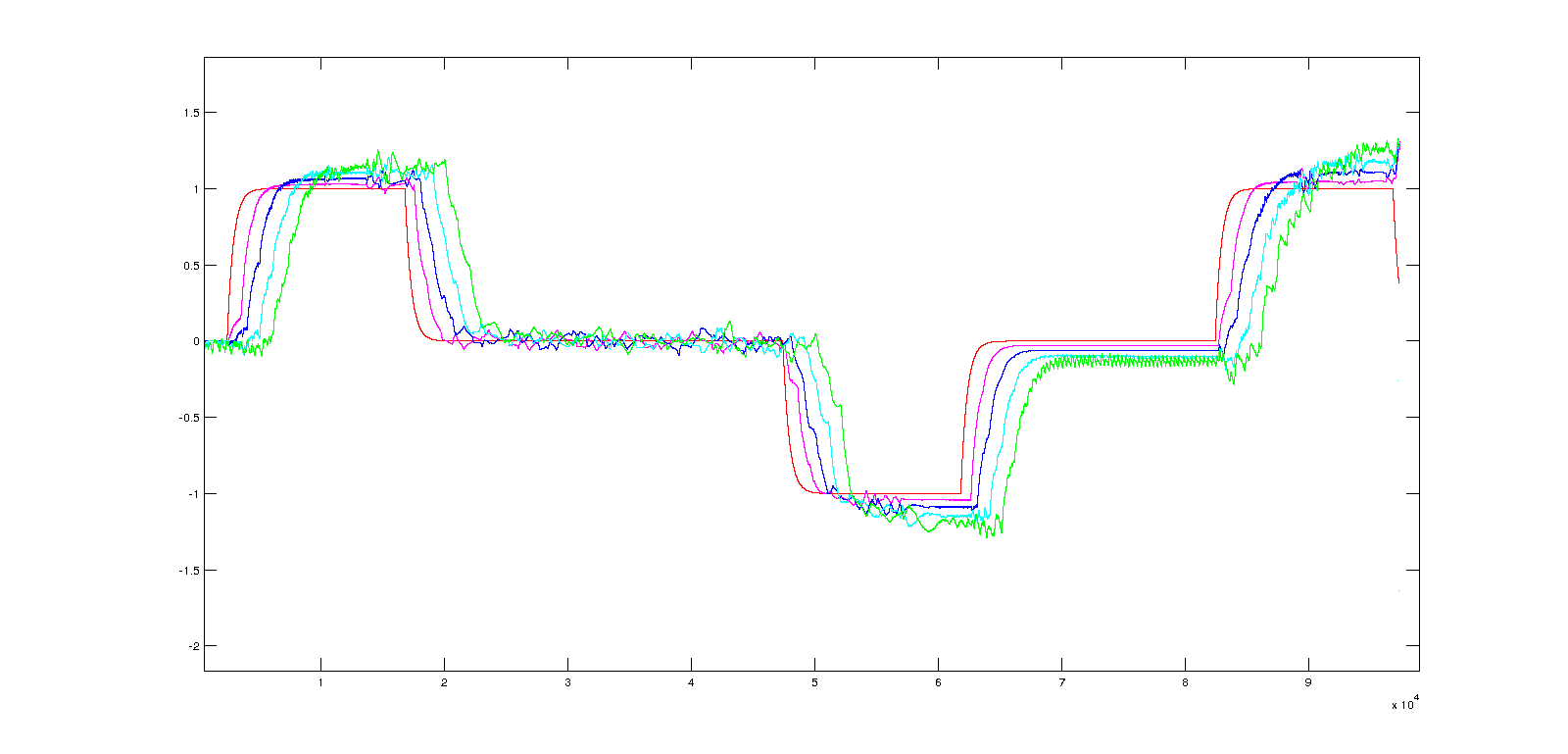I have saved different Matlab plots in an unique .fig. The figure is like this:
 Now, I would like to introduce a filter in these plots to reduce the noises, but unfortunately I have lost the code that generates these signals.
Now, I would like to introduce a filter in these plots to reduce the noises, but unfortunately I have lost the code that generates these signals.
Is there a way to extract data of each signal in this figure?
I tried this:
open('ttc_delay1000.fig');
h = gcf; %current figure handle
axesObjs = get(h, 'Children'); %axes handles
dataObjs = get(axesObjs, 'Children'); %handles to low-level graphics objects in axes
objTypes = get(dataObjs, 'Type'); %type of low-level graphics object
xdata = get(dataObjs, 'XData'); %data from low-level grahics objects
ydata = get(dataObjs, 'YData');
But I am confused and I don't know if it's the right way to act. Thanks!
